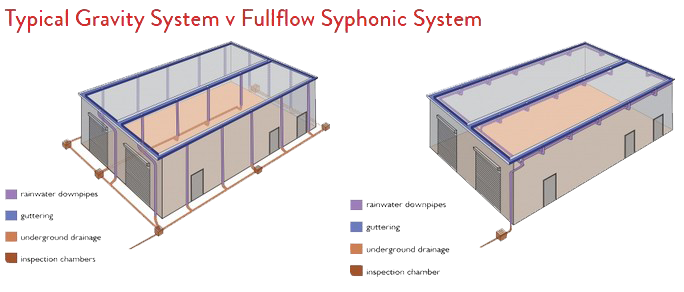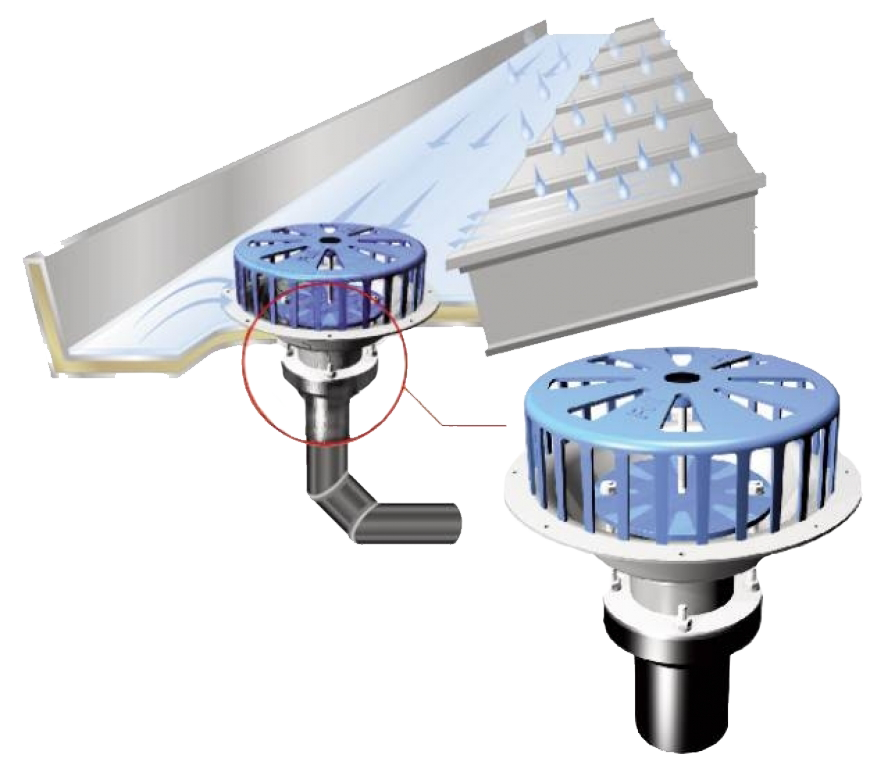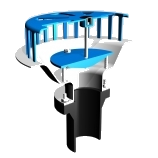
Loading ....


In principle, syphonic drainage is a very simple process. Unlike traditional roof drainage, which is designed to flow part full, a syphonic system operates at full capacity, when water is sucked or syphoned from the roof down into the drain at high velocity. This system allows architects, consultants and contractors alike to specify a lower number of roof outlet drains and have them flow into a single downpipe. Whereas a conventional outlet is simply a hole set into the lowest point on the roof, into which the water pours, the syphonic drain incorporates an anti-vortex plate that acts as a baffle, allowing only water to be drawn of the roof. During heavy rainfall the outlet drain fills to above the anti-vortex plate, cutting off air flow into the pipe. This lack of air, coupled with the downward pull of the water creates a vacuum. The drainage pipes then flow at 100% full over the entire system. The priming of this syphonic system takes place in four typical stages: Gravity Flow, Plug Flow, Bubble Flow and Full Bore.
Several outlet drains can be connected to a single collector pipe (see diagrams below). This means that the pipe can be laid without fall directly under the roof covering, with numerous outlet drains discharging into it. The collector pipe is routed to a single downpipe. When the pipes fill, the water in the downpipe wants to fall. This action causes the water in the horizontal collector pipe to be pulled through the downpipe to replace the water flowing out. The water pressure in the system falls below atmospheric pressure and water on the roof is sucked into the connected drains. On reaching the ground, the water travels into a vented manhole or inspection chamber where it is discharged at atmospheric pressure into the storm sewer.


